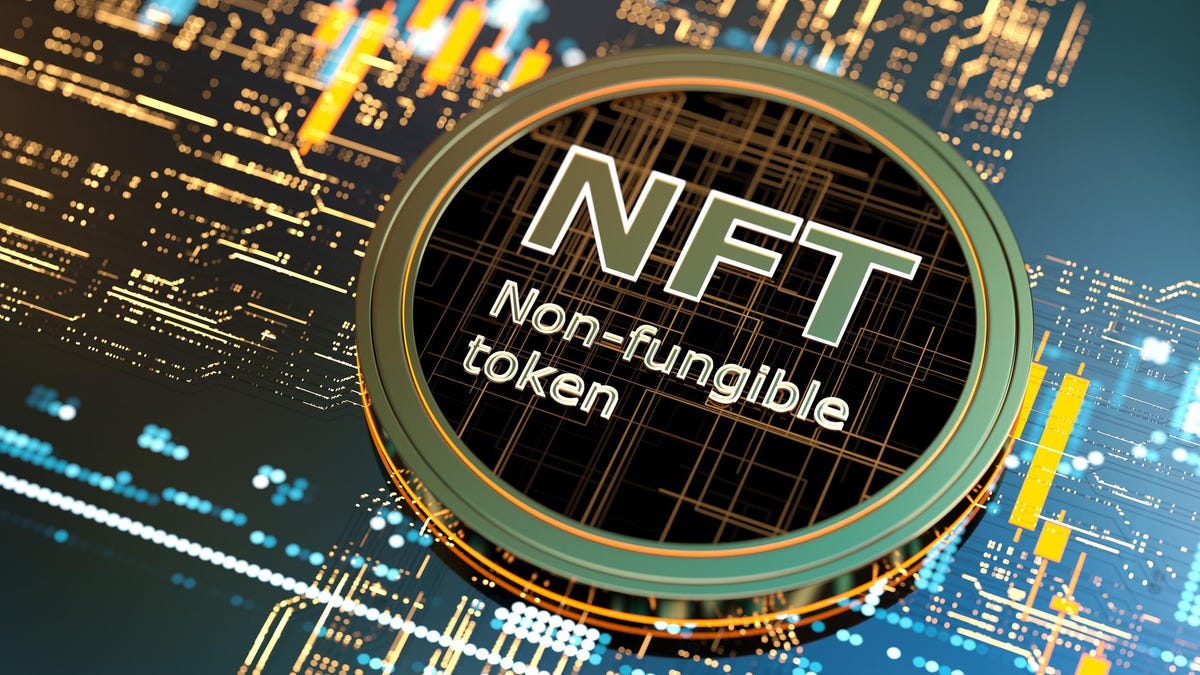
Illustration
The Industrial Revolution inflated the supply of consumer goods and gave rise to mass marketing as a way to escalate consumer demand. For more than a century, brands have been built through mass media. First magazines, then radio and, since WWII, TV advertising.
Today, brands are facing a new world of digital consumerism. In the emerging new model, creators upend traditional marketing and disintermediate markets by creating person-to-person communities. This starts looking to me like a new version of the internet circa-1999 when we reached both technological disruption point and deep cultural shift.
Non-fungible tokens, or NFTs, are creating an abundance of intellectual properties that are essential for winning in the post-modern creator economy.
An NFT is a blockchain-based digital file which allows “collectors” to own unique, limited-quantity artifacts that grow in value through a bidding process. It’s cryptographically authenticated, meaning the creator is verified. These non-interchangeable items, like property or a fine piece of artwork, can only have one official owner at a time. With unique identification codes and metadata, these items are truly one-of-a-kind.
For example, having a JPEG of Van Gogh’s Starry Night, is like owning a print, and, therefore many people can own the item, just by copying the JPEG. An NFT of the painting is like owning the original – authenticated and of grater value.
NFTs are digital assets – such as artwork, photography, video, music, audio and multimedia, virtual reality, fashion, or online video games. NFTs are changing how brands operate on social media. Digital analytics firm DappRadar, which tracks NFT data on various platforms, reports that the total market of volume generated by the NFTs in 2020 was $95 million. By the end of Q2 2021 that figure stood at $2.5 billion.
MORE FOR YOU
According to a Adweek/Harris Poll survey, 40% of respondents said they’re “familiar” with NFTs, and 81% said they’re “aware” of them. Millennials are most likely to invest in NFTs, as well as “collectors” who earn more than $100,000. Of the consumers who said they would be interested in buying an NFT, the highest percentage of respondents (36%) said they’d want a song. The next highest, at 35%, said they’d be interested in digital artwork, and 33% said they were interested in videos.
Taco Bell, Coca-Cola, Campbell’s, Microsoft and Nike are among the brands and companies that introduced NFTs. Although NFTs have been sold for a few years, they entered the mainstream earlier this year when digital artist Beeple auctioned a NFT for $69 million earlier this year, and Jack Dorsey, auctioned his his first tweet (“just setting up my twttr”) for $2.9 million.
NFT technology can provide a new user experience and help increase brand awareness and affinity. Mobile advertising campaigns that use NFTs can be distributed programmatically across various digital platforms. Brands can use NFT technology to provide personalized gifts, vouchers or more to their customers.
Brands can monetize ads multiple times over by turning them into NFTs; they can further their equity via storytelling and collectible assets; or, create buzz in the lead-up to events and product launches via early access tokens. NFTs open up a whole new revenue stream for brands by selling goods in purely digital form or as a complement to a physical offering.
They can also use them to collect data, or reward crowd-funding. The likes of Starbuck and P&G have been sourcing product ideas and feedback from consumers for years. Now, co-creators can get rewarded for their contribution by owning a share in the final output.
Many brands use proceeds from NFTs and donate them to charity. Not only is this an excellent way to instill a brand as a valuable asset to the community; it’s an essential strategy for attracting today’s consumers, who are four to six times more likely to purchase from purpose-driven brands, as well as tech-savvy millennial and Gen Z buyers.
Another potentially revolutionary aspect of NFTs is that they could upend the way digital media is distributed and monetized. Right now, most digital content is being monetized via platforms, be it ad-supported ones like Facebook or podcasts or subscription-based ones like Netflix. These platforms act as the middleman between content creators and consumers, and make a cut by the virtue of being the distributor. Although creators still own the copyright to their work, they relinquish part of their ownership to the platform owners and, in today’s meme culture, its consumers as soon as they upload it for distribution.
The rise of NFTs has renewed the chatter on developing a new media ownership model to make the space more creator-centric. With blockchain-powered smart contracts, a new disintermediated distributed model of media ownership would be possible and allow creators of the digital assets to directly profit from fully.
Exploring this new distributed model for how brand can monetize digital media points to the future of digital marketing. For example, the value of any particular TikTok video is not just measured against how many views they garner, but also how many copycat versions they inspiret. The more those meme’d versions pop up, the more popular and valuable the original version becomes.
As NFTs continue to garner mainstream attention, I expect to see more brands jump in and start to experiment with releasing digital collectibles. For brands, this is an opportunity to generate additional revenues and engage with a core fan base by creating exclusive experiences. New business models will be tested for digital media creators, helping them bypass existing platforms and monetize directly from their audiences.




